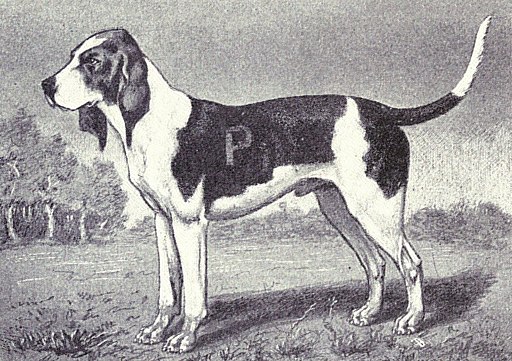Dog Day Saturday 2023-08-12
Owning and interacting with pets, according to studies, can be a form of therapy for many. We have dedicated Saturday to dogs and Wednesday to cats, when we will post an article on each of those days. We will also post articles on occasion about other animals people may have as pets. – Editorial Team
.
Artois Hound
Editorial Team
not specified (except those with signature on image), Public domain, via Wikimedia Commons

P.Marlow at English Wikipedia, Public domain, via Wikimedia Commons
The Artois Hound, also known as the Chien d’Artois, is a rare and ancient breed of hound that originates from the Artois region in northern France. This breed is primarily known for its exceptional scenting ability and its role as a hunting dog. Here, I’ll provide a comprehensive overview of the various aspects of the Artois Hound breed:
Origin and History: The Artois Hound’s exact origin is uncertain, but it is believed to have been developed in the Artois region of France during the Middle Ages. The breed was primarily bred for hunting game such as hare and fox. The Artois Hound is a member of the scent hound group, which includes dogs specifically bred for their keen sense of smell and tracking abilities.
Physical Characteristics: The Artois Hound is a medium to large-sized dog with a sturdy and muscular build. Its physical characteristics include:
- Coat: The breed has a short, dense, and coarse coat that lies close to the body. The coat is typically bicolor, with a combination of white and black or white and orange markings.
- Color: The primary coat colors include white with black markings (“tricolor”) or white with orange markings (“bicolor”). The black or orange spots are distributed over the body, and there’s often a black saddle-like patch on the back.
- Ears: The Artois Hound has long, drooping ears that hang close to its cheeks, contributing to its distinguished appearance.
- Tail: The tail is of medium length, often carried with a slight curve but never curled over the back.
- Size: The breed falls within the medium to large size range. Adult males typically stand around 22 to 24 inches (56 to 61 cm) at the shoulder, while females are slightly smaller, ranging from 21 to 23 inches (53 to 58 cm).
Temperament and Behavior: The Artois Hound is known for its lively and energetic nature. Here are some key aspects of their temperament:
- Hunting Instinct: This breed is primarily bred for hunting purposes and possesses a strong hunting instinct. They have an exceptional sense of smell and are skilled trackers.
- Sociable: Artois Hounds are generally friendly and sociable dogs. They can get along well with other dogs and pets if properly socialized from a young age.
- Energetic: Due to their history as working dogs, Artois Hounds require regular exercise and mental stimulation. Engaging in activities like long walks, jogs, and interactive play is essential to keep them happy and healthy.
- Independent: As hounds, they have a certain degree of independence and can be somewhat stubborn at times. Training should be consistent, patient, and positive.
- Family Dogs: Artois Hounds can make excellent family dogs when raised in a loving and active environment. They tend to form strong bonds with their families.
Care and Maintenance: Caring for an Artois Hound involves certain considerations:
- Exercise: This breed requires a significant amount of exercise. Daily walks and opportunities to explore with their keen noses are crucial to prevent boredom and maintain their mental well-being.
- Grooming: The short coat of the Artois Hound is relatively easy to maintain. Regular brushing helps keep the coat clean and reduce shedding. Check their ears regularly for any signs of infection.
- Training: Early socialization and training are essential for Artois Hounds. Positive reinforcement methods work best, as they respond well to rewards and treats.
- Health: Like all breeds, Artois Hounds are prone to certain health issues, including hip dysplasia and ear infections. Regular veterinary check-ups and a healthy diet are important.
Conclusion: The Artois Hound is a versatile and skilled hunting breed with a unique appearance and history. While relatively rare, these dogs can make loyal companions for active families who can provide them with the necessary physical and mental stimulation they require. Proper training, socialization, and care are key to raising a well-adjusted Artois Hound.


